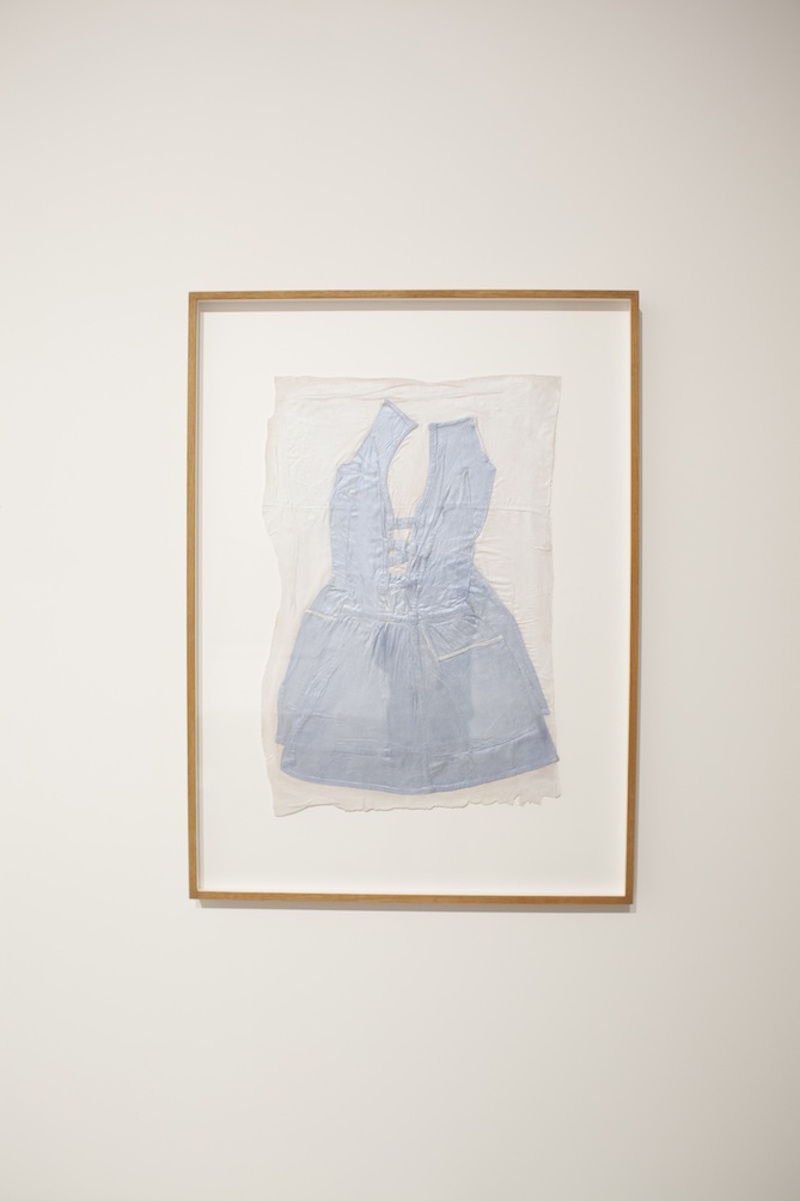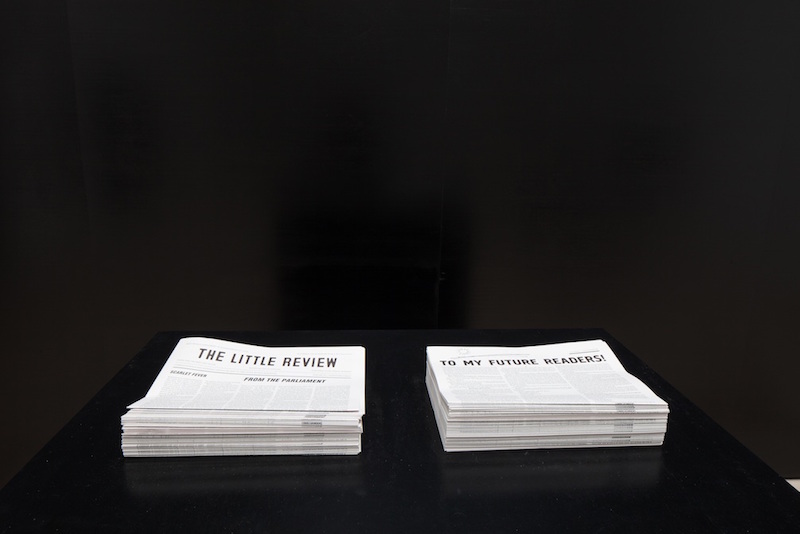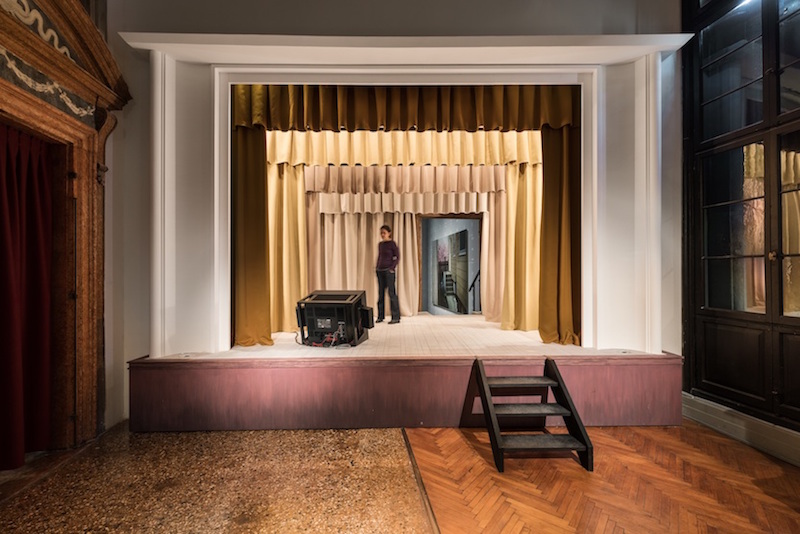
Erwin Wurm, Ship of fools, 2017,
Courtesy the artist & La Biennale di Venezia
Responding to a year of political turmoil: of Brexit and Trump; of crackdown in Turkey and of yet more terrorist attacks, this year’s Venice Biennale was meant as a countervailing force. French native Christine Macel set out to curate “a biennale designed with artists, by artists and for artists", wherein art serves as a "last bastion against individualism and indifference”. Lacking an overarching theme, Viva Arte Viva is divided into nine chapters: The Pavilion of Artists and Books and The Pavilion of Joys and Fears in the Central Pavilion of the Giardini; The Pavilion of the Common, - the Earth, - the Traditions, and - the Shamans; as well as The Dionysian Pavilion; The Pavilion of Colors; and finally The Pavilion of Time and Infinity in the Arsenale. Offering artists loose realms to move within is an intriguing idea, yet its realization often underwhelms. Especially in the Central Pavilion, many works are poorly presented. Frances Starkes' Behold Man! (2013), a strong and detailed 192 x 244 cm collage, is hung in a narrow corridor that prevents visitors from beholding the work in its entirety. Too often the placement of works feels like a compromise, more than a thought through juxtaposition. The nine chapters, with their promise of openness and free space, can come to feel clichéd and banal.
Nevertheless, the exhibition offers rewarding discoveries and re-discoveries: rather than inviting the usual suspects, Macel has selected a wide range of artists from different generations and nationalities. In the central pavilion, Hajra Waheed’s Sea Change (2011 – ongoing) narrates the story of nine migrants that go missing on their journey across the ocean. Portrayed through hundreds of miniature paintings of an empty, roaring sea, Waheed creates an intimate and touching depiction of absence and loss.

Hajra Waheed, Avow 1 – 38, 2017
, Courtesy the artist & La Biennale di Venezia, photo by the author
In the Arsenale, Argentinean artist Martin Cordiano investigates our relationship to space and volume. Common Places (2015) consists of six rooms without ceilings, where balls of chalk in different colors and sizes have been carefully placed, simultaneously locked in by and bursting through the enclosed spaces.

Martin Cordiano, Common Places, 2017
, Courtesy the artist & La Biennale di Venezia, photo by Italo Rondinella
I enjoyed seeing Heidi Bucher’s works in the Arsenale. Bucher, born in Switzerland in 1926, used everyday objects and materials to investigate the relationship of the human - and especially the female body - to its surroundings. Macel presents a selection of seven garments preserved with an emulsion of natural white rubber.

Heidi Bucherer, Blaues Kleidchen (Title Unknown), 1978,
Courtesy the artist & La Biennale di Venezia, photo by Italo Rondinella
Strong women also dominate the national pavilions in the Giardini. The Romanian pavilion, set up as a miniature retrospective, honors the work of Geta Brătescu, a Grand Dame of conceptual art. American artist Sharon Lockhart represents Poland with a photography series and a film investigating the work of Janusz Korczak, a Polish-Jewish pedagogue who initiated an early 20th century newspaper created by children for children.

Sharon Lockhart, Little Review, 2017
, Courtesy the artist & La Biennale di Venezia, photo by Francesco Galli
A personal highlight was Phyllida Barlow's presentation in the British Pavilion. At times vast and voluptuous, at times subtle and self-contained, but always with a healthy dose of humor and wit, Barlow’s sculptures absorb the neoclassical building entirely. Made of low-cost industrial materials, the works do not lay claim to eternal truth or value, but instead propose temporary solutions and interventions to the physical spaces we inhabit.

Phyllida Barlow, folly, 2017
, Courtesy the artist & La Biennale di Venezia, photo by Francesco Galli
Anne Imhof has elevated the German Pavillon with a stage made from glass. Performers dressed in black inhabit a hostile setting of Doberman Pinscher dogs, wired fences and metal instruments. To the sound of loud beats, they move expressionlessly on and under the glass platform. Imhof won this year's Golden Lion for best Pavilion, perhaps deservedly: it is a strong work that is inherently touching. Yet lacking in irony or humor and demanding humble contemplation, it's all a bit too German for my taste.

Anne Imhof, Faust, 2017
, Courtesy the artist & La Biennale di Venezia, photo by Francesco Galli
At Fondazione Prada, The Boat is Leaking. The Capitain Lied forms a wonderful counterpart to the busy biennale. With great precision and devotion, Udo Kittelmann presents the work of filmmaker Alexander Kluge, photographer Thomas Demand and stage designer Anna Viebrock. Portraying the three artists as pathfinders and witnesses of their time, the curator does not seek to introduce their individual oeuvres so much as to re-assemble and intertwine their work, thereby creating wholly new experiences and encounters. The rooms of the Fondazione's multistory building form a collection of freely associated stories, memories, and encounters that follow no particular narrative. Interestingly, Kittelmann's exhibition does full justice to the works of Demand, Kluge and Viebrock, in spite of the strong curatorial intervention. Whereas the 57. Venice biennale too often felt well-behaved and dull, The Boat is Leaking. The Capitain Lied delivers the passionate outcry for art that Macel aspires towards.

Installation view, The Boat is Leaking. The Captain Lied, Fondazione Prada, Venice with Anna Viebrock, Stage, 2017 and Alexander Kluge, Terror = Furcht und Schrecken, 2017,
Courtesy the artists and Fondazione Prada, Photo: Delfino Sisto Legnani
57. Esposizione Internazionale d’Arte
La Biennale di Venezia
13.05. – 26.11.2017
